Everything You Need To Know About Wendy's Fresh Never Frozen Beef
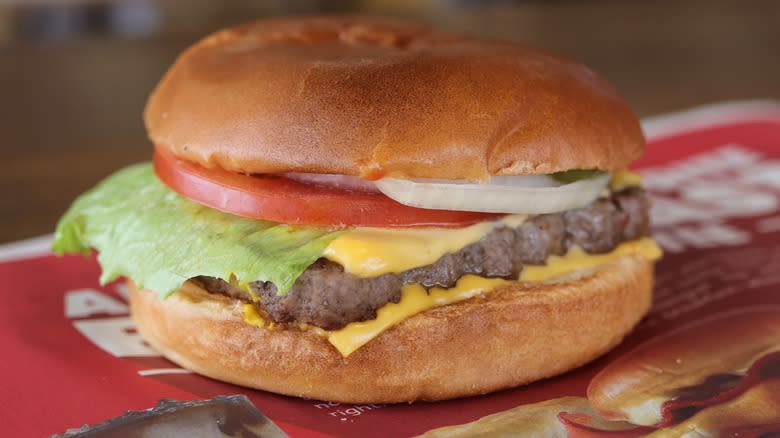
Wendy's Old Fashioned Hamburgers proudly and frequently asserts in its commercials that the beef it uses for its many products is "fresh, never frozen." The alliteration and directness employed in the phrase makes it sound like a catchy if exaggerated marketing slogan and nothing more. But those three little words are actually a company policy and overarching approach to doing business. Wendy's really does everything that it can to make sure the hamburger patties used in all of its burgers, from the Jr. Cheeseburger up to the Baconator (which looks nothing like it does in the ads), are as recently processed as possible and never turned into puck-like objects after some shelf-life-extending time in sub-zero temperatures. The reason, Wendy's implies: fresh burgers have a better, beefier flavor than ones made with meat that's been previously thawed — like those of its competitor fast food chains that use frozen patties. And when fast food hamburgers are ranked worst to best, the offerings at Wendy's rank pretty well.
It takes a lot of equipment, effort, and planning for Wendy's to execute its fresh meat vision. Here's everything the burger chain does to ensure that customers' burgers never saw the inside of a freezer.
Read more: Fast Food Restaurants That Serve Low-Quality Beef
Lots Of Trips Make Fresh Meat Available
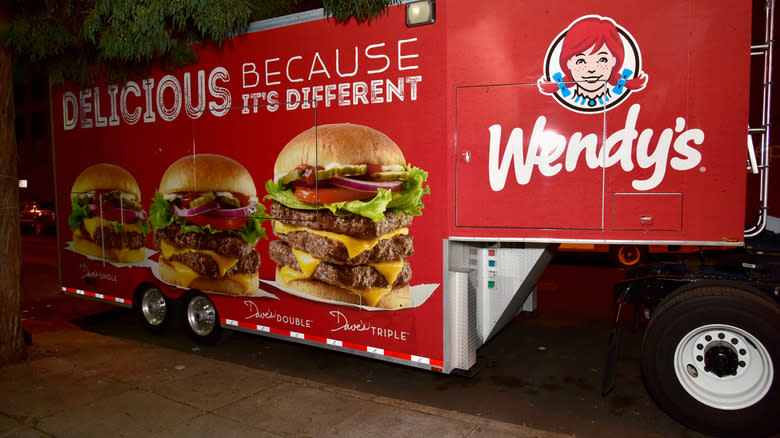
Transporting frozen beef is much easier than distributing fresh, just-processed hamburger meat. Frozen meat can remain viable for weeks or months and, after arriving at a restaurant in large quantities in a still-solid state, it can be stored in freezers on the premises until it's needed. Because Wendy's uses only fresh meat, it has to nearly constantly send out trucks to supply all of its individual locations in the United States.
Wendy's makes thousands of individual beef runs to its outlets every week. Beef from slaughterhouses and processing facilities — all domestic, to save time on the production end to make for a fresh product — is placed into Wendy's distribution system, where the bulk of the operations take place on refrigerated trucks under constant observation to maintain the correct temperature so that the meat is kept cold enough to ensure safety but not so cold that it freezes over. The patties arrive at a Wendy's restaurant at a temperature of right around 35 degrees Fahrenheit.
To further reduce the need for freezing, Wendy's managers take only as much meat from the truck as they think they're going to need until the next delivery, which is never more than a couple of days away. That way they can store it in a refrigerator set just a few degrees above freezing without having to worry about using an actual freezer for the excess.
Wendy's Is Committed To Animal Welfare Practices For Better Beef
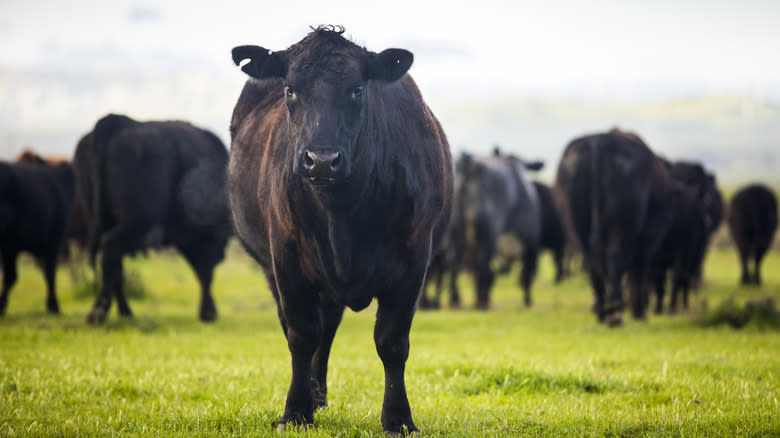
To Wendy's, the notion of fresh beef that's never been frozen is wrapped up with an overall commitment to high-quality protein, relative to the rest of the fast food marketplace. And since 2020 beef of excellent quality for the burger chain is contingent on exacting standards in raising the cattle that will be processed into Wendy's hamburger patties. Fast food industry antibiotics may be a bigger problem than you thought, and in 2016, Wendy's pledged to phase out everyday antibiotic use throughout its beef supply chain, seeking to eliminate it entirely by 2030. As of 2020, about one third of Wendy's meat suppliers have reduced antibiotic use in cattle feed to those deemed only the most medically vital.
Wendy's is also the first restaurant conglomerate of any kind to sign up for the Progressive Beef program, a system to encourage and manage animal welfare and sustainability. Signatories must adhere to guidelines regarding humane treatment of cattle and antibiotic use, and they're subject to outside oversight.
Outside Of North America, All Claims Are Off
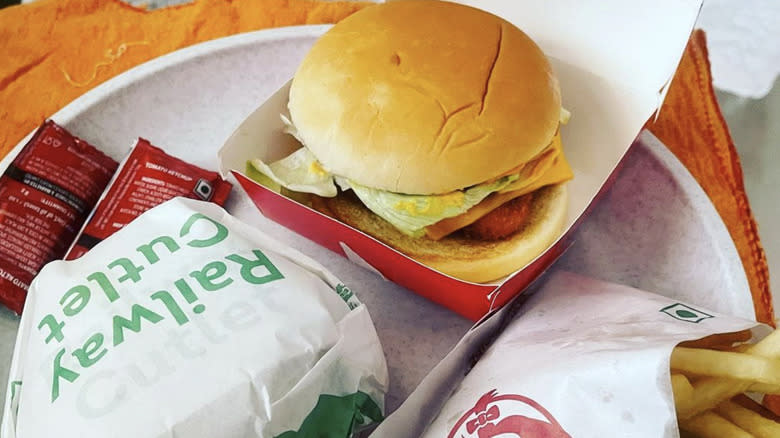
Providing freshly produced square-shaped beef patties to its more than 6,500 United States-based outlets is a huge and sophisticated undertaking for Wendy's. Factoring certain parameters into the equation, "fresh, never frozen" is going to have some limitations. Beef can only last for a limited time in Wendy's-contracted refrigerated trucks. Those can get to the lower 48 states, as well as into Alaska and Canada, within the still-fresh period. It takes so long to transport beef to other locales, though, that it would spoil before arrival even under managed refrigerated conditions. Wendy's cannot guarantee beef isn't frozen somewhere along the way to its outlets in Hawaii or Mexico.
There are many Wendy's items you can't get in the U.S., including a very different menu in India. The southeastern Asian nation is so far away from the U.S.-based Wendy's that freezing beef would be absolutely necessary for the product to survive transit. But Wendy's doesn't even need to promise fresh beef to Indian customers because its restaurants there don't serve hamburger patties— the country is predominantly Hindu, a religion that eschews eating beef.
The Chili Is Made With The Beef Too
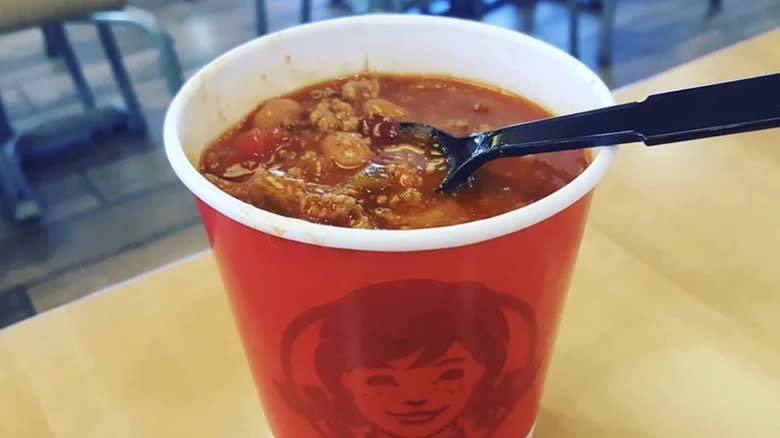
There's just one place in the world of Wendy's where customers will encounter beef that's less than extremely fresh, having been sitting around a restaurant for more than a day. That beef is anything but raw, however, and in keeping with the "fresh, never frozen" pledge, it still hasn't been frozen. This is the meat that goes into Wendy's chili. An anomaly among fast food chains, Wendy's serves up huge paper cups of the stuff, which is more of a vegetable soup with beans and unadulterated ground beef added, barely resembling the thick, beefy gravy that is Texas-style chili.
Amid the secret history of the first Wendy's restaurant, founder Dave Thomas put chili on the menu when he began operations in the late 1960s. Its purpose: to cut down on costly food waste. Unsold hamburger patties were repurposed — saved and chopped to be turned into chili meat, and that practice continues today. Because Wendy's can't and won't freeze any excess stock of ground beef patties, individual restaurants take whatever unused beef they have and put it aside until they've got enough to make a batch of chili.
Why Wendy's Burger Patties Are Square
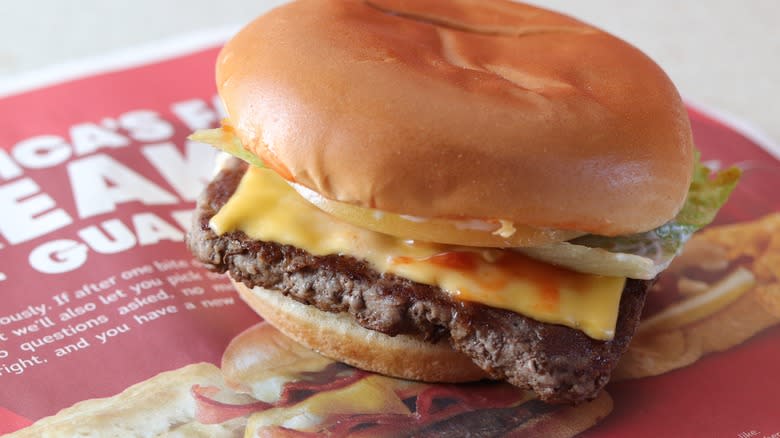
The beef patties that star in every one of the hamburgers at Wendy's stand out against the sandwich building blocks of competitors like Burger King and McDonald's in a couple of ways. Not only are Wendy's patties virtually guaranteed to be freshly produced, having never been frozen at any stage, but they're also square. Hamburger patties are almost always round, but not at Wendy's, a decision made by the restaurant's founder, Dave Thomas, back in 1969 as a marketing ploy. Even when the company was brand new, Wendy's served higher-quality beef, utilizing a four-sided shape that made it visible beyond the confines of the round bun in order to catch the diner's eye. "They hang over the bun so our customers can see the quality beef before even taking that first bite," Wendy's company literature says.
There are also practical reasons why Wendy's serves square burgers. A greater number of square patties will fit on a grill than round ones, allowing a restaurant to maximize its kitchen space and time. Wendy's briefly considered switching to traditional round patties in the late 2000s after focus group participants said that the square shape made the product seem more processed. As a compromise, Wendy's kept the square patties but made them look more handmade, allowing for off-kilter edges or slight discrepancies.
Read the original article on Mashed


